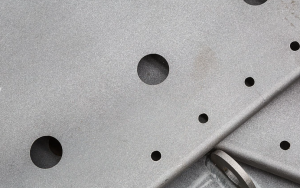CNC machining refers to machining with CNC tools. CNC indexing control machine tool by CNC processing language programming and control, through the computer decoding, so that the machine tool to perform the prescribed action, through the cutting tool will be processed into semi-finished product parts. CNC machining has great advantages over manual machining tools. Usually, CNC machining includes precision machining, CNC machining lathe, CNC machining milling machine, CNC machining boring and milling machine, etc.
General CNC machining includes precision machining, CNC machining lathe, CNC milling services, and CNC turning services.
It is not easy for factories to keep output capacity. Each machining order item is composed of several factors, such as process, material, technical requirements, drawing details. In addition, CNC operators should be familiar with the knowledge:

The following is the common CNC processing flow:
- CNC exponentially controlled machine tools are programmed and controlled by CNC machining language; usually G code. Numerical control machining G code language tells the numerical control machine tool to use what kind of cartesian position coordinates and control the tool feed speed and spindle speed, as well as tool converter, coolant, and other functions.
- CNC turning services refers to the turning tool from the tool point (or the fixed origin of the machine tool) began to move until returning to the point and the end of the processing program through the path, including the cutting path and the cutting tool cut, cut out and another non-cutting empty stroke path.
The feed route of finishing machining is basically carried out in the order of the contour of its parts. The feed route’s focus is to determine the feed route of rough machining and empty stroke.
Custom CNC milling services, the determination of the processing route should generally follow the following principles and ensure the accuracy and surface roughness of the processed workpiece.
CNC operators should complete the corresponding machining work according to the machining drawing and can analyze and solve problems: master machining characteristics, machining process, and machining accuracy of machining machinery.
CNC operators should choose machining tools according to different processing materials of products, understand the cutting principle, be familiar with tool grinding and determine processing parameters. Understand the measuring principle and accuracy of all kinds of measuring tools, and use them correctly

The main responsibilities of a CNC technician are as follows:
- Responsible for the daily maintenance of CNC equipment of the department, able to repair the equipment;
- Able to deal with emergencies in the production process.
- according to the mold manufacturing plan, complete CNC machining tasks and ensure workpiece processing quality.
- The reasonable use of the tool, the program knife is not reasonable to have an obligation to put forward reasonable suggestions, simple workpiece processing, and do not rely on programmers.
- According to the requirements of machine tools and tools point inspection and maintenance work, keep the working environment in line with 6s [6s is finishing (SEIRI), rectification (SEATON), cleaning (SEISO), cleaning (SEIKETSU), accomplishment, SECURITY six items, because all begin with “S,” 6S for short.] Rules.
- Complete other tasks assigned by leaders.
Categories
Share On
Recent Post

CNC Machined Parts Surface Finish Explained
In the world of precision manufacturing, CNC machining and injection

Sandblasting Surface Finish Explained
Sandblasting is a powerful method used in different industries to


